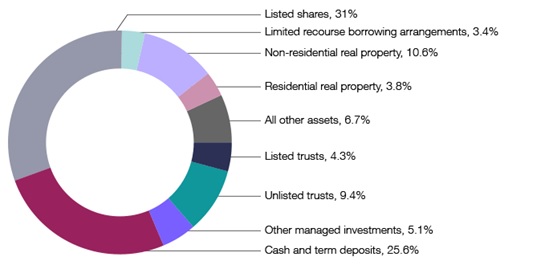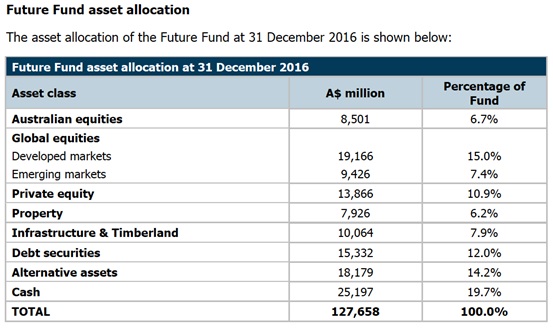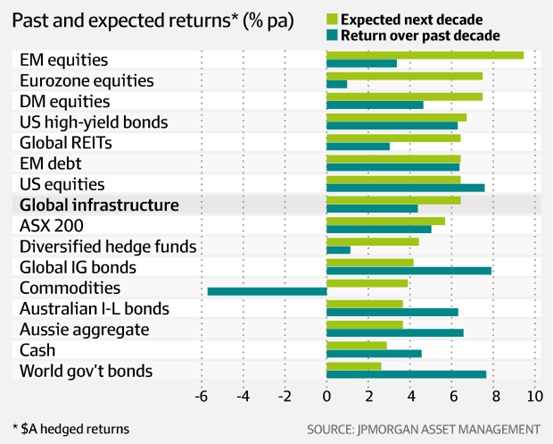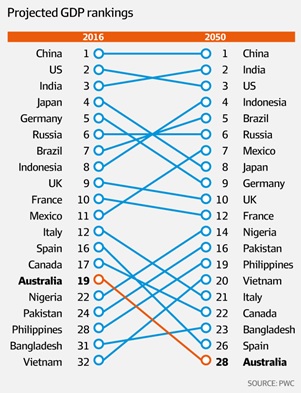Retirement
Why your SMSF should invest internationally
Many Australians’ portfolios risk everything on the ASX and the property market when they should be looking overseas to manage their risk.
Why your SMSF should invest internationally
Many Australians’ portfolios risk everything on the ASX and the property market when they should be looking overseas to manage their risk.

SMSFs’ heavy allocation in Australian equities continues to place them at risk of missing out on growth opportunities in the future. How can practitioners help trustees adjust their portfolios?
The ATO website has updated information on the actual investment strategies of SMSFs as at June 2015.
The allocation of investments within SMSFs can be seen in the chart below sourced from the ATO website.
Asset allocation of SMSFs as at June 2015


What stands out is what would seem like a parochial bias towards Australia, and in particular the Australian share market with 31 per cent allocation, and further exposure to Australian shares probably via listed and unlisted trusts and other managed investments. We will spare readers the lecture that the ASX is dominated by banks and resources companies, offering reduced diversification and potential sources of earnings growth to investors.
This is intriguing when compared to the composition of Australia’s Future Fund that was created many years ago by Peter Costello. Less than a quarter of the Future Fund’s exposure to share markets is held in Australian shares.
The table below outlines the current investment strategy of the Future Fund which in some respects is similar in purpose to SMSFs in that it is to provide for long-term obligations.

A recent research piece from JP Morgan, focusing on expected returns in the decade ahead (light green) versus returns of the past decade (dark green), supports the allocation of the Future Fund.

The challenge for SMSF practitioners is getting their clients to adjust their investment strategy towards generating returns in the future rather than simply extrapolating the past.
PwC recently completed a study that was projecting future economic contribution from the top countries in the world between now and 2050. Australia, currently ranked 19th in economic output, is projected to slip to 28th by 2050.

With Bangladesh, Pakistan, the Philippines, Nigeria and Vietnam projected to overtake Australia in terms of economic contribution, we question the historic wisdom of trustees in allocating the majority of their portfolio to ‘blue chip’ Australian shares.
We can only hope that Bangladesh is not forecast to overtake us in Test cricket in the years ahead, but that did not form part of PwC’s study.
SMSF practitioners should encourage their SMSF trustees to consider a global perspective in forming their investment strategy to reduce the risks of putting too many eggs into one geographic region.
Mark Draper, adviser, GEM Capital Financial Advice

Self managed super fund
Financial progress hinges on ambition, not income, says Stake Report
Australia faces a financial turning point, with new research from online investment platform Stake revealing a nation divided into two distinct groups: the 'Starters', who invest and feel in control ...Read more

Self managed super fund
OKX targets Australia's $1 trillion SMSF market with new crypto platform launch
In a significant move aimed at capitalising on Australia's burgeoning digital asset market, global onchain technology company OKX has unveiled a new Self-Managed Super Fund (SMSF) expansion on its ...Read more

Self managed super fund
Industry leaders launch SMSF Innovation Council to drive digital transformation
A consortium of finance industry leaders has launched an SMSF Innovation Council to help Australia's $1.02 trillion self-managed superannuation fund industry navigate digital transformation. Read more

Self managed super fund
Superannuation guarantee to be paid on government paid parental leave, says ASFA
The Association of Superannuation Funds of Australia (ASFA) has hailed the government's decision to include Superannuation Guarantee payments with its Paid Parental Leave policy as a critical step ...Read more

Self managed super fund
SMSF experts advise against hasty reactions to potential super tax changes
As the Australian Government proposes a new tax measure on superannuation earnings for balances exceeding $3 million, experts from the self-managed super funds (SMSF) sector are urging members not to ...Read more

Self managed super fund
Federal government announces changes to superannuation contribution caps
The Federal Government has announced changes to the superannuation contribution caps, impacting self-managed super funds (SMSFs) and their members from 1 July 2024. Read more

Self managed super fund
SMSF Association calls for joint effort to tackle early super access
The SMSF Association is calling on a collaborative approach including the Government, the Australian Taxation Office (ATO), the Australian Securities and Investments Commission (ASIC), and the ...Read more

Self managed super fund
Rest Super members file class action over alleged insurance premium deductions
Shine Lawyers has initiated a class action lawsuit against Rest Superannuation (Rest), alleging the unlawful deduction of income protection insurance premiums from members' superannuation accounts. Read more

Self managed super fund
Financial progress hinges on ambition, not income, says Stake Report
Australia faces a financial turning point, with new research from online investment platform Stake revealing a nation divided into two distinct groups: the 'Starters', who invest and feel in control ...Read more

Self managed super fund
OKX targets Australia's $1 trillion SMSF market with new crypto platform launch
In a significant move aimed at capitalising on Australia's burgeoning digital asset market, global onchain technology company OKX has unveiled a new Self-Managed Super Fund (SMSF) expansion on its ...Read more

Self managed super fund
Industry leaders launch SMSF Innovation Council to drive digital transformation
A consortium of finance industry leaders has launched an SMSF Innovation Council to help Australia's $1.02 trillion self-managed superannuation fund industry navigate digital transformation. Read more

Self managed super fund
Superannuation guarantee to be paid on government paid parental leave, says ASFA
The Association of Superannuation Funds of Australia (ASFA) has hailed the government's decision to include Superannuation Guarantee payments with its Paid Parental Leave policy as a critical step ...Read more

Self managed super fund
SMSF experts advise against hasty reactions to potential super tax changes
As the Australian Government proposes a new tax measure on superannuation earnings for balances exceeding $3 million, experts from the self-managed super funds (SMSF) sector are urging members not to ...Read more

Self managed super fund
Federal government announces changes to superannuation contribution caps
The Federal Government has announced changes to the superannuation contribution caps, impacting self-managed super funds (SMSFs) and their members from 1 July 2024. Read more

Self managed super fund
SMSF Association calls for joint effort to tackle early super access
The SMSF Association is calling on a collaborative approach including the Government, the Australian Taxation Office (ATO), the Australian Securities and Investments Commission (ASIC), and the ...Read more

Self managed super fund
Rest Super members file class action over alleged insurance premium deductions
Shine Lawyers has initiated a class action lawsuit against Rest Superannuation (Rest), alleging the unlawful deduction of income protection insurance premiums from members' superannuation accounts. Read more








